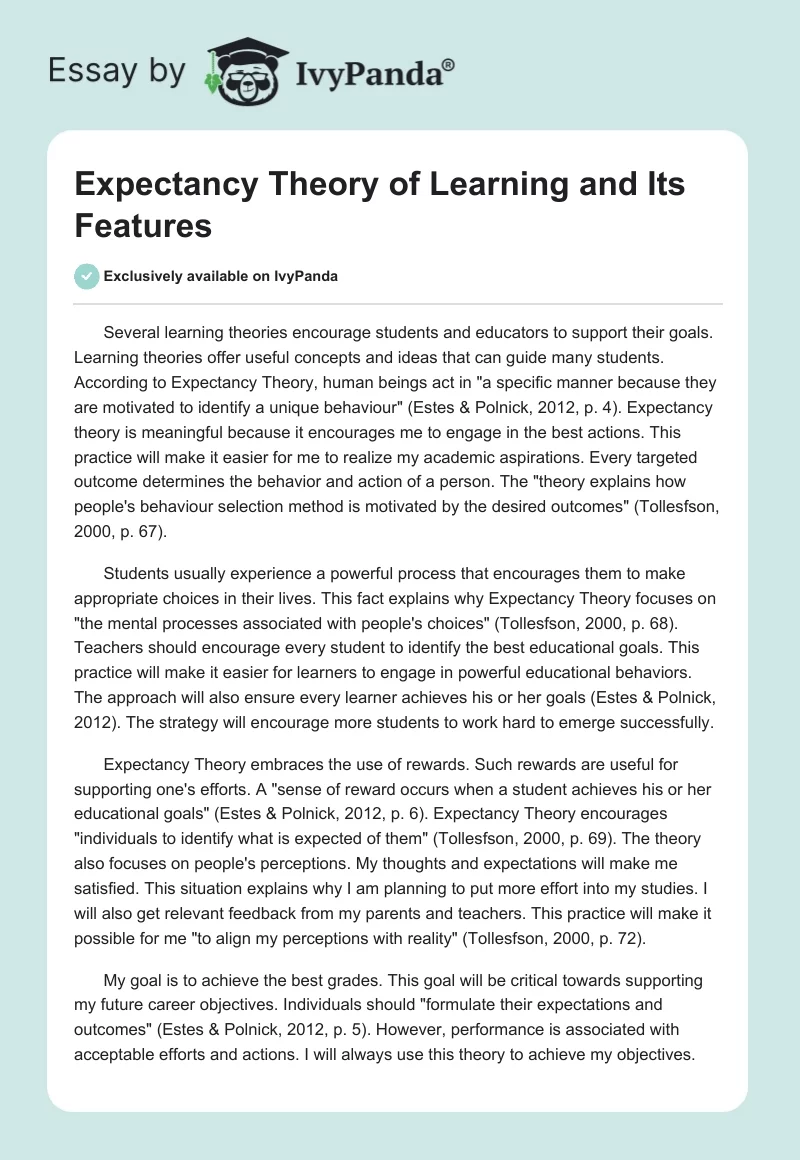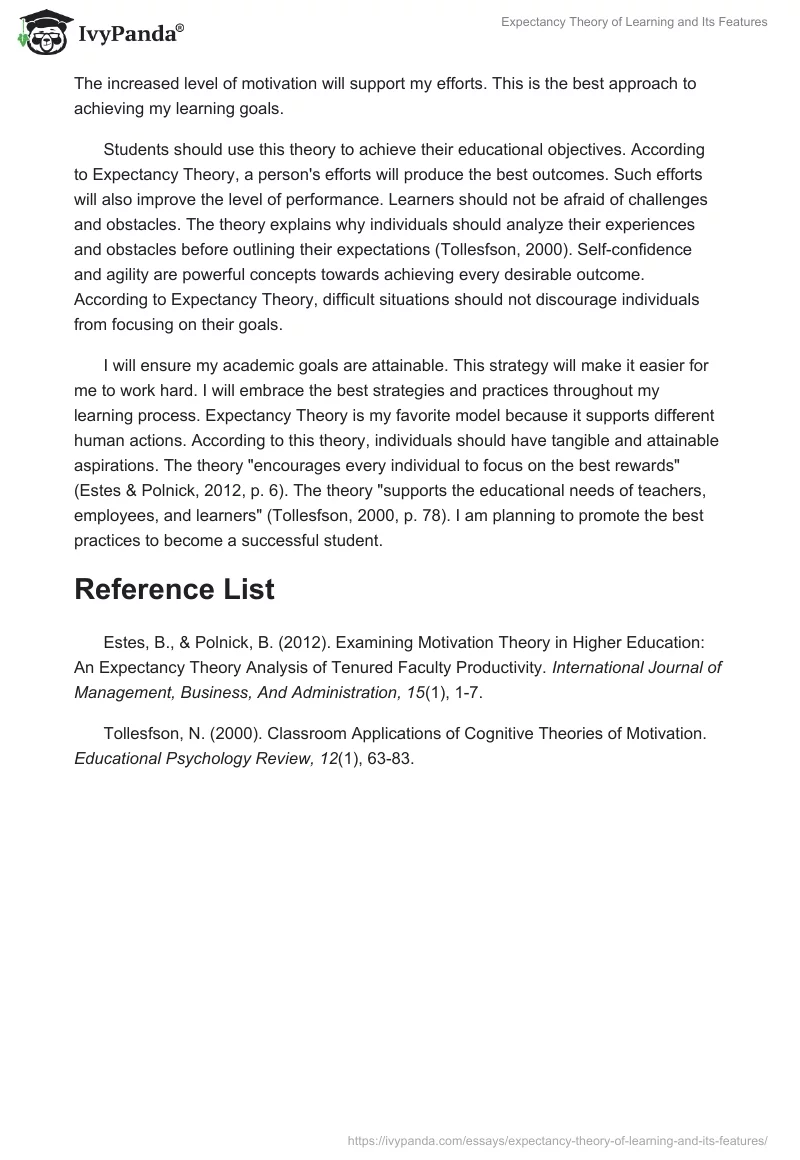Several learning theories encourage students and educators to support their goals. Learning theories offer useful concepts and ideas that can guide many students. According to Expectancy Theory, human beings act in “a specific manner because they are motivated to identify a unique behaviour” (Estes & Polnick, 2012, p. 4). Expectancy theory is meaningful because it encourages me to engage in the best actions. This practice will make it easier for me to realize my academic aspirations. Every targeted outcome determines the behavior and action of a person. The “theory explains how people’s behaviour selection method is motivated by the desired outcomes” (Tollesfson, 2000, p. 67).
Students usually experience a powerful process that encourages them to make appropriate choices in their lives. This fact explains why Expectancy Theory focuses on “the mental processes associated with people’s choices” (Tollesfson, 2000, p. 68). Teachers should encourage every student to identify the best educational goals. This practice will make it easier for learners to engage in powerful educational behaviors. The approach will also ensure every learner achieves his or her goals (Estes & Polnick, 2012). The strategy will encourage more students to work hard to emerge successfully.
Expectancy Theory embraces the use of rewards. Such rewards are useful for supporting one’s efforts. A “sense of reward occurs when a student achieves his or her educational goals” (Estes & Polnick, 2012, p. 6). Expectancy Theory encourages “individuals to identify what is expected of them” (Tollesfson, 2000, p. 69). The theory also focuses on people’s perceptions. My thoughts and expectations will make me satisfied. This situation explains why I am planning to put more effort into my studies. I will also get relevant feedback from my parents and teachers. This practice will make it possible for me “to align my perceptions with reality” (Tollesfson, 2000, p. 72).
My goal is to achieve the best grades. This goal will be critical towards supporting my future career objectives. Individuals should “formulate their expectations and outcomes” (Estes & Polnick, 2012, p. 5). However, performance is associated with acceptable efforts and actions. I will always use this theory to achieve my objectives. The increased level of motivation will support my efforts. This is the best approach to achieving my learning goals.
Students should use this theory to achieve their educational objectives. According to Expectancy Theory, a person’s efforts will produce the best outcomes. Such efforts will also improve the level of performance. Learners should not be afraid of challenges and obstacles. The theory explains why individuals should analyze their experiences and obstacles before outlining their expectations (Tollesfson, 2000). Self-confidence and agility are powerful concepts towards achieving every desirable outcome. According to Expectancy Theory, difficult situations should not discourage individuals from focusing on their goals.
I will ensure my academic goals are attainable. This strategy will make it easier for me to work hard. I will embrace the best strategies and practices throughout my learning process. Expectancy Theory is my favorite model because it supports different human actions. According to this theory, individuals should have tangible and attainable aspirations. The theory “encourages every individual to focus on the best rewards” (Estes & Polnick, 2012, p. 6). The theory “supports the educational needs of teachers, employees, and learners” (Tollesfson, 2000, p. 78). I am planning to promote the best practices to become a successful student.
Reference List
Estes, B., & Polnick, B. (2012). Examining Motivation Theory in Higher Education: An Expectancy Theory Analysis of Tenured Faculty Productivity. International Journal of Management, Business, And Administration, 15(1), 1-7.
Tollesfson, N. (2000). Classroom Applications of Cognitive Theories of Motivation. Educational Psychology Review, 12(1), 63-83.


